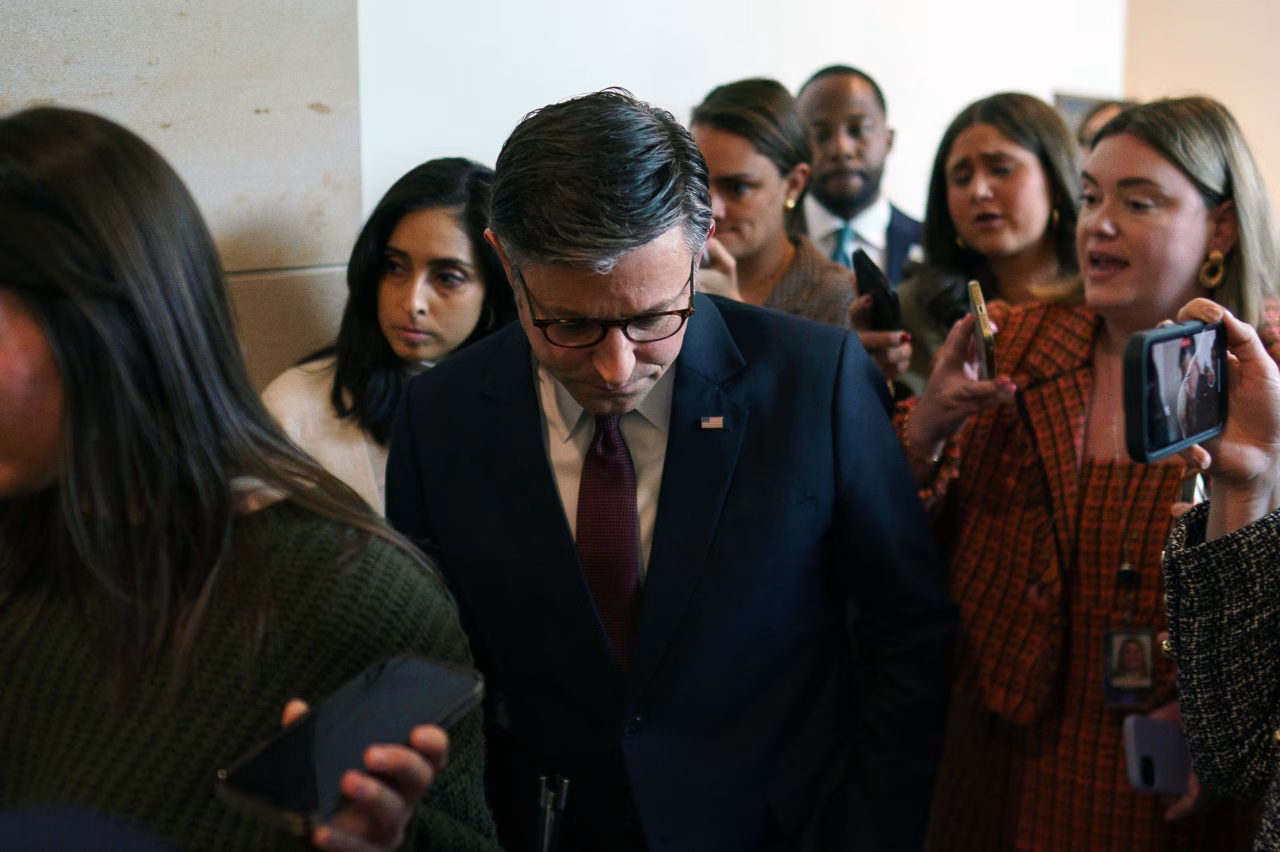
WASHINGTON—House Republicans, struggling with their narrow majority and lawmakers’ demands for spending cuts, are considering an extension of President Trump’s expiring tax cuts that would last for as little as five years.
The discussions come as Senate Republicans now plan to move ahead with their own proposal next week. A five-year plan would put House Republicans at odds with Treasury Secretary Scott Bessent and the head of the Senate Finance Committee, Mike Crapo (R., Idaho), who want the tax cuts to be permanent.
A five-year tax cut would limit the total revenue decline in the “one big, beautiful bill” that Republicans are trying to push through Congress this year. It would be a move in the direction of the party’s deficit hawks and most conservative members. They want spending cuts that are similar in size to the tax cuts and they are skeptical of the idea that Congress can just say that extending expiring tax cuts is cost-free.
“There is almost no way it’s going to be permanent, so I guess the question is how long do you just make it last,” said Rep. Andy Harris (R., Md.), chairman of the conservative House Freedom Caucus.
But a temporary tax cut wouldn’t provide the same certainty as the permanent policy that many Republicans say is important for taxpayers and businesses. And setting an expiration date would lessen some of the economic growth the tax cuts could generate and leave the tax cuts’ fate in the hands of a future president and Congress, when Republicans might not have full control.
“I’m pushing what President Trump wants, and President Trump has only talked to me about permanency,” said Rep. Jason Smith (R., Mo.), chairman of the House Ways and Means Committee. “I will not allow members’ agenda to stand in the way of President Trump’s agenda. I’m aligned with the president. Other members should be aligned with the president.”
House Republicans have a 218-215 majority in the House currently, and they have been struggling to reach agreement on a budget blueprint for a bill that would extend expiring tax cuts, reduce social-safety-net spending, boost national defense and provide money for immigration enforcement. The effort is still a long way from Trump’s desk, and plans could change repeatedly before then.
House Speaker Mike Johnson (R., La.) had said the Budget Committee would vote on its blueprint this week, but that’s slipped until at least next week. Committee Chairman Jodey Arrington (R., Texas) said Wednesday that a plan could be formally released this week.
“We’re trying to move dials and shift things to close the gap,” Arrington said, noting that a shorter tax-cut extension could shave hundreds of billions or trillions of dollars off the total. “This is not easy, but we’re doing the hard work of putting it all together.”
Still, GOP senators are getting antsy at the House’s pace, and they are now planning to advance their own approach next week. That’s a two-bill plan that would provide $150 billion each for border and military spending, likely offset with spending cuts. Tax cuts would wait until later this year, closer to their Dec. 31 expiration.
“It’s time for the Senate to move,” said Senate Budget Committee Chairman Lindsey Graham (R., S.C.).
Asked on Fox Business about the idea of a five-year tax bill, Bessent responded: “The goal is still for them to be made permanent.”
No matter who goes first, the House and Senate must agree on a budget before moving any bills under a special procedure that dodges the Senate’s 60-vote filibuster threshold.
The big divide in the House is over the depth of spending cuts and over whether the bill would increase projected budget deficits. A core group of conservative lawmakers is insisting on significant changes to programs such as Medicaid, looking for about $2.5 trillion in savings over a decade. But others worry about the effects of cuts, including a potential hit to rural hospitals.
As lawmakers try to bump up the spending-cut numbers, they’re also looking to limit the tax-cut number on the other side of the fiscal equation.
Republicans generally agree that they want to extend tax cuts enacted in 2017, because the alternative—higher taxes on most households in 2026—is untenable. If Congress doesn’t act, the standard deduction and child tax credit will shrink and marginal rates will climb.
GOP lawmakers also want to implement some of Trump’s campaign-trail policies, such as tax-free tips.
But the total size of a 10-year or permanent extension—$5.5 trillion—was causing sticker shock among House Republicans, some of whom are increasingly concerned about budget deficits and the government’s borrowing costs.
“If you cut taxes without cutting spending, you haven’t cut taxes, you simply shifted them to more borrowing or to inflation,” said Rep. Tom McClintock (R., Calif.), a Budget Committee member.
A nonpermanent tax-cut extension has always been part of the possible mix of policies. It’s what Republicans did in 2017—the choice that led to this year’s fight.
Back then, Republicans made the corporate tax-rate cut permanent to provide certainty, and they scheduled the cuts for individuals, estates and closely held businesses to lapse after 2025 to stay within their $1.5 trillion target and comply with Senate procedural constraints.
And a shorter tax-cut extension doesn’t have to be uniform. Lawmakers could extend different provisions for different lengths of time, potentially locking in for longer pieces such as faster depreciation that economists agree have the most bang for the buck on growth.
“Ideally, you want to get as many permanent as you can and make sure that that provides stability,” said Rep. Ron Estes (R., Kan.).
Some Republicans are getting frustrated at the party’s inability to find a consensus so far. “If you fail to do your job on time with a topline number, what happens in the private sector to somebody? They get fired,” said Rep. Max Miller (R., Ohio). “They get held accountable.”


